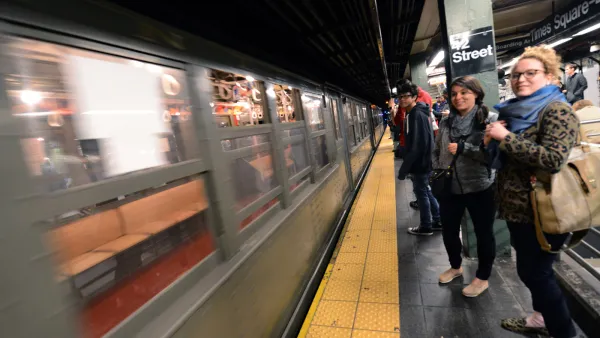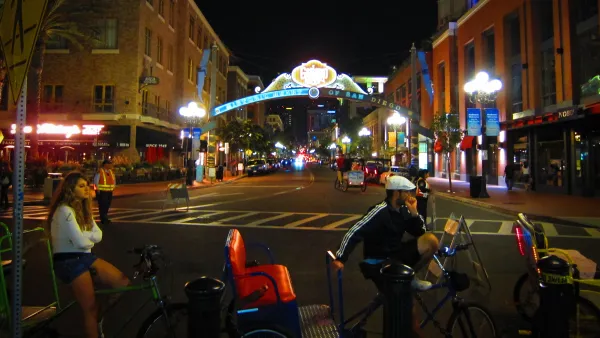Despite significant investment in transit infrastructure, and renewed interest in downtowns and walkable neighborhoods, new data shows that gains in transit commute mode share have been hard to come by in America’s largest cities, says Kaid Benfield.
"As most readers know only too well, the US pales by comparison to the rest of the world when it comes to getting around by anything other than single-occupancy cars," writes Benfield in a recent blog post. He adds, "[s]lowly but surely, the trend is now beginning to reverse as the hot markets are in downtowns and walkable neighborhoods, with the ones having good transit service commanding the highest premiums on a per-square-foot basis."
Despite these new trends, Benfield finds mixed results in the findings of a recent analysis examining 2011 American Community Survey results regarding metropolitan commuting patterns. Only New York City and Washington D.C, who lead in general transit usage with commute mode shares of 31.1 percent and 14.8 percent, respectively, significantly increased their transit mode shares in the last decade. New York, Boston and San Francisco all led the way in walking to work, with shares of 6.3 percent, 5.3 percent and 4.3 percent, respectively.
Nationwide, bike commuting is still relatively low, with most cities registering fewer than 2 percent shares. Portland (topping the list) and three Californian cities (the Bay Area, San Jose/Silicon Valley, and Sacramento) were the exceptions. Of interest, notes Benfield, is the finding that the 10 longest commutes all average around 30 minutes, a statistic that "has been fairly stable for centuries; only the modes and distances have changed."
FULL STORY: Which US metros have the greenest commuting habits?

National Parks Layoffs Will Cause Communities to Lose Billions
Thousands of essential park workers were laid off this week, just before the busy spring break season.

Retro-silient?: America’s First “Eco-burb,” The Woodlands Turns 50
A master-planned community north of Houston offers lessons on green infrastructure and resilient design, but falls short of its founder’s lofty affordability and walkability goals.

Delivering for America Plan Will Downgrade Mail Service in at Least 49.5 Percent of Zip Codes
Republican and Democrat lawmakers criticize the plan for its disproportionate negative impact on rural communities.

Test News Post 1
This is a summary

Test News Headline 46
Test for the image on the front page.

Balancing Bombs and Butterflies: How the National Guard Protects a Rare Species
The National Guard at Fort Indiantown Gap uses GIS technology and land management strategies to balance military training with conservation efforts, ensuring the survival of the rare eastern regal fritillary butterfly.
Urban Design for Planners 1: Software Tools
This six-course series explores essential urban design concepts using open source software and equips planners with the tools they need to participate fully in the urban design process.
Planning for Universal Design
Learn the tools for implementing Universal Design in planning regulations.
EMC Planning Group, Inc.
Planetizen
Planetizen
Mpact (formerly Rail~Volution)
Great Falls Development Authority, Inc.
HUDs Office of Policy Development and Research
NYU Wagner Graduate School of Public Service




























